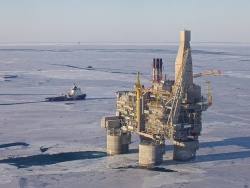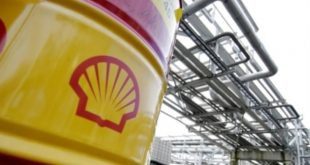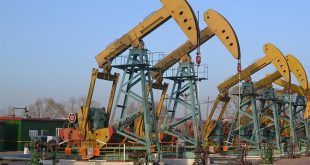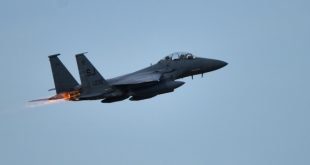
The US want to flood the world with shale fuel
Almost two years ago, Saudi Arabia declared war on the producers of “unconventional” oil. First of all, the us shale industry. The Kingdom is seriously concerned about the rapid growth of production from new fields in the United States and decided to artificially drop the price, heavily shaking its low cost of black gold. The Saudis want to hedge against losing their place in the market. They expected that competitors will go out of business because of the inability to deal with dumping. But “oil Jihad” could not — the us shale companies are going to get it back.
The point of no return
The decision of the Arabs led to a catastrophic collapse of world prices, is not the case with the 2008 crisis. And in the past, such events were exceptional. Oil major brands fell within a few months from 110 to 30-40 dollars a barrel, dropping to $ 25. And unlike acute, but short of the collapse of prices in 2008, the current situation seems to be settled.
Between manufacturers began a game of “who will blink first”. Experts predicted that they would lose American shale companies. However, according to the latest data, this has not happened.
The consulting firm Jefferies LLC said that at least 10 companies producing shale oil in the U.S. increased their budgets in total of $ 1.1 billion, to start drilling and developing new wells.
Among them — the major players in the shale market, such as Devon and Pioneer. A signal for expansion for them will be the stabilization of prices at the level of $ 50 or higher, since this marker is a boundary for the full cost of shale oil companies.
Signs of stabilization really is. Although oil grades Brent and WTI still regularly goes down to $ 45 per barrel and sometimes even below, the greater part of August she was quoted about $ 50. American companies have received the most essential breath of air to resume investing.
Borax and barrels
American statistics confirm this trend and other data. For the first time since February, the number of drilling rigs in the United States, according to Baker Hughes, surpassed 400 units. Growth compared to its early summer lows — almost 50 percent. While a year ago, plants were twice as big, and a year and a half ago, their number exceeded a thousand pieces, we can say: the US oil industry (and most of the wells falls on shale oil) slowly, gently, but still go back to drilling.
The same applies to production volumes. Agency energy information administration (EIA) reports that the local minimum in oil production was reached in the first week of July (of 8.43 million barrels per day), after which it began to rise. By August 12 production surged to 8,59 million barrels. Again, was able to play a little more than 10 per cent of the decline over the past year, but at least the decline is not observed.

Americans plan to invest billions of dollars in extraction and drilling
Photo: Nati Harnik / AP
That is just three of the indicator (increase of investments, increase of drilling and production growth) shows that the shale industry in the United States is in the knockout, and once operated and expects to grow even in the current extremely adverse conditions.
The plan of the Saudis, at least for the moment, failed. Due to what the Americans were able to withstand the perfect storm in the oil market?
Dumped ballast
In the first place — by reducing costs. Owing to a combination of factors, costs have been cut drastically. The price level at which various fields achieved profitability, demonstrates this clearly. So, in 2014 on a plot of Permian Midland (West TX) the rate was $ 85 per barrel and for 2016, fell to $ 38. On Permian Delaware — 63 and $ 33, Eagle Ford — 75 and $ 39, respectively (data consulting company Rystad Energy).
The numbers are impressive. However, the reason for such drastic reductions in operating cost are not clear. Does not specify whether the costs fall on the same drilling due to the progress in technologies or expenses reduced by transfer of operations solely for the convenient operation and cost-effective areas. In the latter case, how long to keep the low cost is unlikely to succeed.
However, one factor appears quite clearly. Namely, a sharp drop in the cost of services and equipment provided by service companies. In a crisis, they were forced to make serious concessions to oil companies, but would not be entirely without orders. Prices for service have fallen, and with them — and costs oil producers.
Heavy pressure is not able to withstand only small companies. In the past year, they went out of business or filed for bankruptcy. The flagships of the industry are more or less adapted to new conditions.
The slate has big eyes
Some experts, however, are of the opinion that the success of the us shale business is not as great as it is want to apply themselves.
According to the chief analyst of PSB Ekaterina Krylova, private us companies are preparing to increase production. At the same time, the total mass of the no, and the production of shale oil is reduced.
“Of all the key deposits production grows only in Permyanka pool (plus 6 percent, according to data for July). And that, according to estimates of the US Department of energy, in September the growth there will slow to 3 percent, and by the end of the year will go to decrease. For other deposits there is a strong decrease in the Bakken in July and 19 percent, Eagle Ford is by 28 percent,” she said, “the Tape.<url>.
According to the analyst IFC Markets Dmitry Lukashova, increased activity of the shale companies still looks like a normal vanity. “According to forecast US Energy Information Administration, total production of shale oil in the seven major regions of the United States will decrease 85 thousand barrels per day in September compared to August. However, the production at new wells will increase by 18 thousand barrels per day. On the basis of such forecasts, investors are hoping that when most of the old wells will be replaced with a new one, production will increase,” — said the expert.
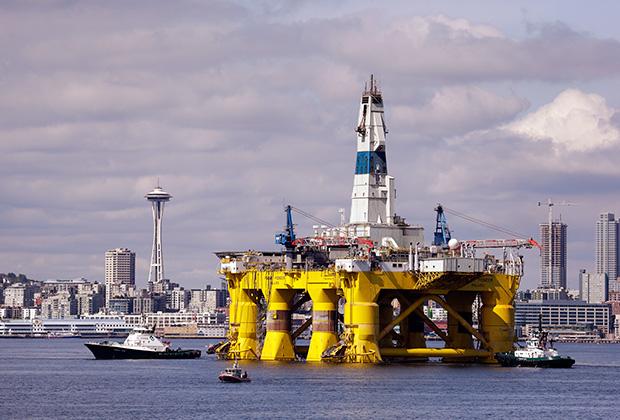
Offshore production will remain unprofitable and at 60 dollars per barrel, said Wood Mackenzie
Photo: Elaine Thompson / AP
On the other hand, senior analyst, Vygon Consulting Maria Belova sure that the production will increase because of the willingness of companies to work with cheap oil.
“As soon as a company even at lower prices were forced to continue production at a loss to provide at least a minimum cash flow to service the old debts, accumulating a new one, the current price is about $ 50 per barrel increases the attractiveness of investment in shale projects,” she said.
Club losers
Not to say that the entire global oil industry easily survived the collapse of prices. Not at all. But the main victims in other categories. First and foremost is a company developing deepwater oil and pumping out the black gold from tar Sands.
According to the company Wood Mackenzie the price down to 60 dollars per barrel 60 percent of the cost-effective “unconventional” oil is an American oil shale, and 20 percent in offshore fields. So, the most severe damage from the “oil Jihad” in Saudi Arabia has suffered Angola, Nigeria, and the countries intending to produce oil in the Arctic.
Trouble touched and leaders of the world oil market. Companies such as Shell, BP, ExxonMobil, forced to curtail projects around the world and reduce the overall activity, but even this does not prevent them to accumulate debts.
For example, Shell’s net debt increased almost 20 times in 10 years, with more than half of this growth came in the last couple of years, when world prices collapsed.
Despite the success of the shale gas industry, the total amount of oil production due to low prices could be substantially reduced. The deficit, in particular, the forecasts of EIA, not accustomed to throw such predictions. Another question, how long will it take to bring the market to balance, given the huge volume of accumulated industrial stocks. Most likely, long. So expect a sharp rise in price of oil is not necessary.
“Compared to last year, available on the oil market imbalance is shrinking, what can be said about the volume of commercial oil reserves. They stabilized at historical low of slightly above 3 billion barrels, and wait for the drop not worth it throughout 2017. The price of Brent crude before year-end will be in the range of 40-50 dollars, which is the average for 2016 will give us Brent at the level of 40-45 dollars per barrel,” predicts Maria Belova.



